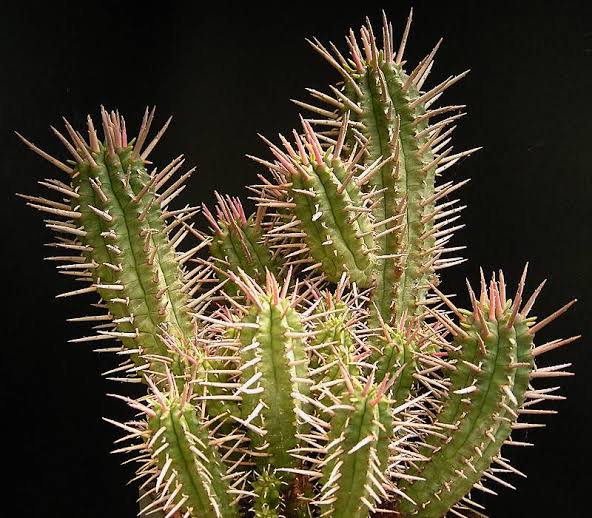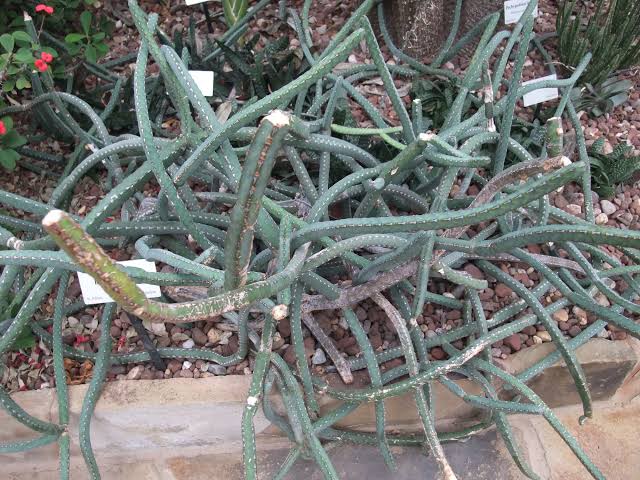Introduction
Euphorbia is a large genus of flowering plants belonging to the family Euphorbiaceae. It is one of the most diverse genera of flowering plants, and one of the largest, with about 2,000 species and 600 hybrids and cultivars. Euphorbia is a large and diverse genus of flowering plants, belonging to the family Euphorbiaceae. It is one of the most diverse genera of flowering plants, and one of the largest, with about 2,000 species and 600 hybrids and cultivars. Let’s take a look at some of the most popular and easy-to-grow types of Euphorbia plants.
What is a euphorbia?
A euphorbia is a succulent that is easy to care for and perfect for those who have low light conditions. Unlike other succulents, euphorbias come in a variety of shapes, sizes and colors, making it easy to find one that will fit in with your home’s décor. Euphorbias also thrive in low light, making it the perfect plant for those who don’t have a lot of time to care for their plants.
Euphorbia Firesticks

Euphorbia Firesticks is a type of Euphorbia that is easy to grow. This plant gets its name from the red and orange “sticks” that come out of the top of the plant. These sticks are actually the flowers of the plant. Euphorbia Firesticks is a fast-growing plant and will quickly fill up a pot. This plant does best in full sun and does not need a lot of water.
Confetti Euphorbia

If you’re looking for an interesting and unusual euphorbia species to add to your home garden, take a look at the confetti euphorbia. This plant is native to Africa and is known for its bright red and orange flowers. It’s a perennial, meaning it will come back year after year, and it does well in full sun or partial shade. The confetti euphorbia is a low-maintenance plant and is perfect for gardens and landscapes with a tropical or desert theme.
Euphorbia Milii

The Crocodile Plant is a succulent with a long history of use in traditional medicine. The sap from the Crocodile Plant is toxic, but this succulent is still highly sought after for its medicinal properties. The plant is believed to help with a variety of issues, such as liver problems, cancer, and heart diseases.
Euphorbia Argyrosperma

Euphorbia argyrosperma, or silver spurge, is a striking succulent that’s easy to care for. The leaves are a beautiful silver color, and the plant blooms clusters of small, star-shaped flowers in shades of pink, red, and yellow. It’s a great choice if you’re looking for a succulent that’s a little bit different. Spurges are generally pretty easy to care for, but be careful not to overwater them—they’ll rot quickly if they get too much water.
Also Read: Saguaro Cactus Facts
The Easter Lily Euorbia

The Easter Lily Euphorbia is aptly named for its flowers, which resemble lilies in both shape and color. This variety of euphorbia is a perennial, meaning it will come back year after year. The Easter Lily Euphorbia is hardy in zones 9-11 and does best in full sun. When planted in the ground, it can reach heights of up to 3 feet. It’s an ideal plant for those who want a bit of color in their landscape, but don’t want to worry about too much upkeep.
Euphorbia milii var. splendens

Crown of Thorns, a.k.a. Splendens Euphorbia, is a gorgeous succulent that is easy to care for. With its bright red blooms and spiny stems, it is sure to add some color to your garden. This variety is native to Madagascar, and it is drought tolerant and can withstand high temperatures. Crown of Thorns is a great choice for gardeners who are looking for a low-maintenance succulent.
Euphorbia obesa (bunny ears)

Euphorbia obesa is a succulent plant that is native to South Africa. This succulent is a little more difficult to find and has Bunny Ears or Obesa as it is also known. It is an evergreen perennial that grows to a height of 2 to 3 feet, with a spread of 3 to 4 feet. The leaves are lanceolate, and the flowers are small, yellow, and fragrant. This plant does well in full sun or partial shade and in dry or moist soils. Euphorbia obesa is drought tolerant and can be used in xeriscaping.
Euphorbia Thymifolia

Euphorbia thymifolia, more commonly known as thyme spurge, is a unique succulent with small, round leaves that are a deep green color. This euphorbia’s foliage has a thyme-like aroma, hence the common name. The flowers are small and a pale yellow color, and the plant blooms sporadically throughout the year. Thyme spurge is a low-maintenance plant that is fairly drought tolerant and does well in full sun or partial shade.
Euphorbia amygdaloides

Euphorbia amygdaloides, or the almond-leaved spurge, is a striking succulent plant that’s perfect for adding interest to your garden. It grows up to 2 feet tall and has bright green leaves that are edged with burgundy. This plant thrives in full sun and is tolerant of drought conditions, so it’s a perfect choice for gardeners in hot climates. The almond-leaved spurge is also deer-resistant, so you don’t have to worry about them eating your plants!
Euphorbia neriifolia

Euphorbia neriifolia is one of the most popular varieties of Euphorbia plants. In fact, it’s often used in landscaping because of its low-maintenance nature and striking appearance. This succulent has deep green leaves with red edges, and can grow up to 18 inches tall. It’s a great option for gardeners who want a plant that looks good all year round.
Foxtail Euphorbia

The Foxtail Euphorbia is a type of cactus that has a very unique look. With its spiky, foxtail-like appearance, this plant is sure to grab attention. And while it may look tough, it’s actually very easy to care for. In fact, it can thrive in a range of environments, from full sun to partial shade. This makes it the perfect plant for any garden or landscape project. With its bright green color and striking form, the Foxtail Euphorbia is sure to add interest and texture to any space.
Also Read: Types of Echeveria Varieties
Arborea Euphorbia

The arborea euphorbia has a more tree-like appearance than most of its cousins, with a thick, woody stem and branches that grow upward. This succulent can get quite large, so be sure to have plenty of space ready for it before you plant! The arborea euphorbia is perfect for creating a unique focal point in your garden or landscape.
Euphorbia ferox

While it may sound like a scary movie monster, Euphorbia ferox is a type of euphorbia that’s actually quite beneficial! This variety is known for its anti-inflammatory properties, making it a great choice for people with skin conditions like eczema. It’s also been shown to be effective in treating pain and fever. Euphorbia ferox is a hardy succulent that does well in drier climates, so it’s perfect for gardeners in warm climates. If you’re looking for a unique variety of euphorbia, be sure to add Euphorbia ferox to your list!
Euphorbia hirta

Euphorbia hirta, also known as the African spurge, is a succulent that’s native to Africa and the Mediterranean. It’s a fast-growing, drought-tolerant plant that can reach up to 2 feet in height. The leaves are green and oval-shaped, while the flowers are small and yellow. This plant is a great addition to any garden, and it’s also a popular houseplant. Euphorbia hirta is easy to care for and can thrive in a variety of conditions.
Euphorbia Tirucalli

Euphorbia tirucalli, also known as pencil cactus, is a succulent plant that belongs to the Euphorbiaceae family. Unlike other Euphorbia plants, it doesn’t produce a milky sap. Euphorbia tirucalli is a perennial shrub that can reach heights of up to 15 feet. It has small, green leaves and produces beautiful, white flowers. This plant is drought-tolerant and can be grown in a variety of climates. Euphorbia tirucalli is often used in landscaping because of its Height and ability to tolerate drought.
Euphorbia tetragona (crown of thorns)

Euphorbia tetragona, also known as “crown of thorns”, is a succulent plant that thrives in low light conditions. Because it doesn’t need much sunlight to grow, it’s the perfect option for indoor gardens or areas with limited natural light. This species can be easy to care for and grow, making it a great choice for beginners.
Euphorbia tetragona is a versatile plant that can be used in a variety of ways. Add it to a pot with other succulents for a pop of color, or use it as a groundcover in a shady garden. No matter where you choose to plant it, this succulent is sure to brighten up any space.
Also Read: Difference Between Agave And Aloe Plant
Euphorbia Lactea

The euphorbia lactea, also known as the “milkweed euphorbia”, is a perennial succulent plant that is native to South Africa but can be found in many other parts of the world. This euphorbia is distinguishable by its white sap and its cylindrical growth pattern. The milkweed euphorbia is a tough plant that can thrive in harsh conditions, making it a great choice for gardeners who live in dry climates. Euphorbia lactea can be used for both ornamental and medicinal purposes.
Euphorbia petricola

This mat-forming plant is thick with green stems come mainly from the base of the plant. It produces tiny little yellow flowers over the stems. Euphorbia petricola is an easy-to-care-for plant that thrives in full sun or partial shade. It’s drought tolerant and can tolerate a range of soil conditions, making it a great choice for gardeners in all climates.
Also Read: Gorgeous Desert Plants
Euphorbia characias

Euphorbia characias, the Mediterranean spurge or Albanian spurge, is a species of flowering plant in the family Euphorbiaceae typical of the Mediterranean vegetation. It is an upright, compact evergreen shrub growing to 1.2 m tall and wide.
Bluish-green foliage looks fresh all year round, and in early summer it’s joined by large, dome-shaped, lime-yellow flowers that tower above it. It’s ideal for growing in a sunny border or gravel garden, and is a good planting partner for kniphofias, which bear orange and yellow flowers.
Euphorbia heterochroma

Euphorbia heterochroma is a succulent native to Tanzania and looks a little like a cactus. It has long spiny stems and is most often covered in thorns. The stems are of uniform width and slightly constricted at small intervals. It grows on sandy or stony soil and is drought resistant.
Conclusion
Euphorbia is a large genus of flowering plants, commonly called spurge. Many members of the family are highly toxic to humans and livestock, but others are useful as ornamentals. Euphorbias vary greatly in form from tiny leafy annuals to stout, succulent shrubs up to 12 ft tall. The best known species come from Africa and Madagascar with E. trigona being one of the most familiar varieties in American gardens.